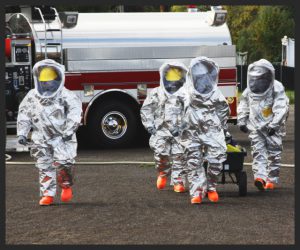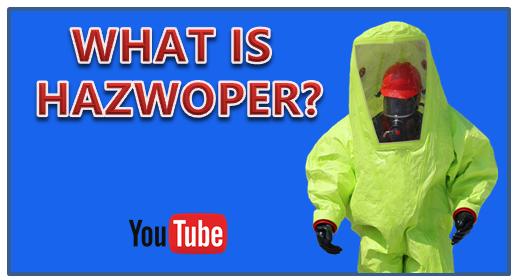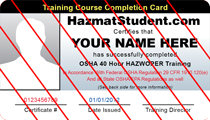| The Rest is History | The Rest is History |
Many workers who are covered under OSHA’s HAZWOPER regulations know about the related training requirements, but they may not know the history of HAZWOPER and how these important requirements came to be.
In the 1950s, a chemical company in the Niagara Falls area of New York routinely buried large amounts of hazardous waste in a neighborhood called Love Canal. This land was later sold to the city of Niagara Falls for development, and houses and a school were built in the area.
By 1978, the soil and groundwater contamination in Love Canal had become so bad that residents of the town started complaining of

chemicals oozing out of the ground and sludge seeping into their basements. The town also reported unusually high rates of serious health problems, including kidney disease, birth defects, and stillbirths.
Extensive media coverage began about Love Canal and other high-profile hazardous waste dumps, and it brought to the forefront the level of threat these areas were to human health and the environment. Due to mounting pressure, the federal government evacuated hundreds of families from Love Canal and began to create new laws and regulations regarding hazardous waste.
In 1980, Congress passed the Comprehensive Environmental Response, Compensation, and Liability Act (CERCLA) which was designed to make companies accountable for their waste and to help with clean-ups. Also known as Superfund, the law provided money for Love Canal and other hazardous waste site cleanups for six years. The Resource Conservation and Recovery Act (RCRA) was also implemented, which focused on correct and safe ways to deal with newly generated hazardous wastes.
In 1986, when Congress was looking to reauthorize cleanup efforts, there was recognition that the workers at these hazardous waste sites were being exposed to an extremely toxic workplace environment. OSHA was asked develop a standard to protect the health and safety of workers who are exposed to hazardous waste.
In 1990, OSHA published the HAZWOPER standard Hazardous Waste Operations and Emergency Response 1910.120, which provides safety and health requirements and seeks to protect those who to perform hazardous waste cleanups or respond to emergencies. Training became required for general industry and construction workers who may be exposed to hazardous substances or wastes on the job.
For information on OSHA HAZWOPER training requirements and the HAZWOPER courses we offer, please visit our HAZWOPER training page.



